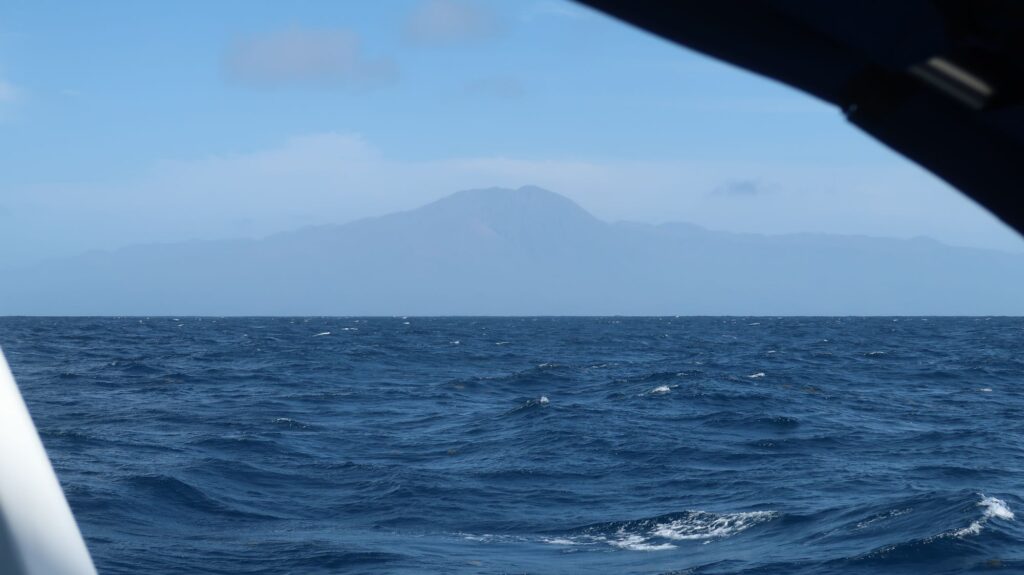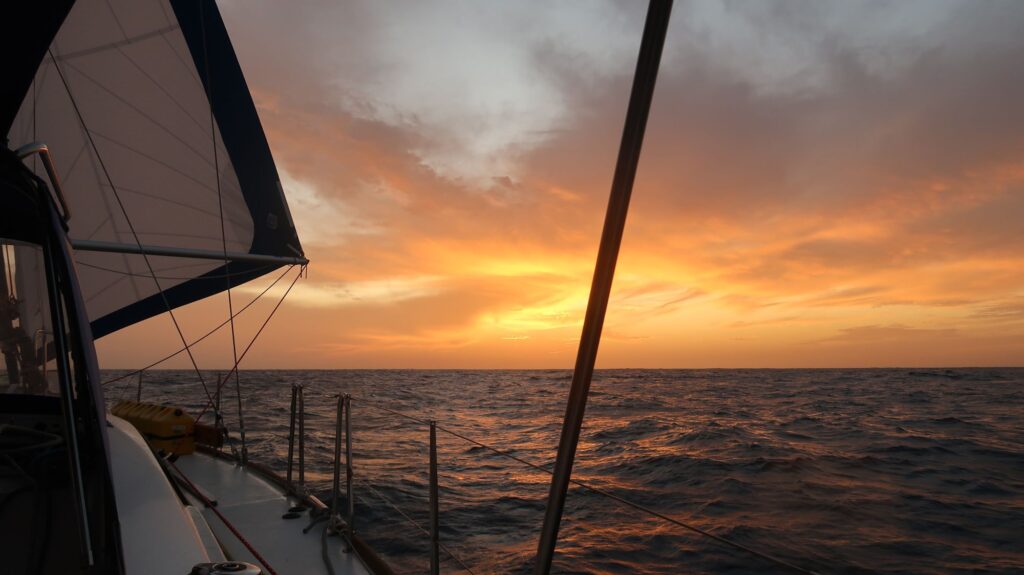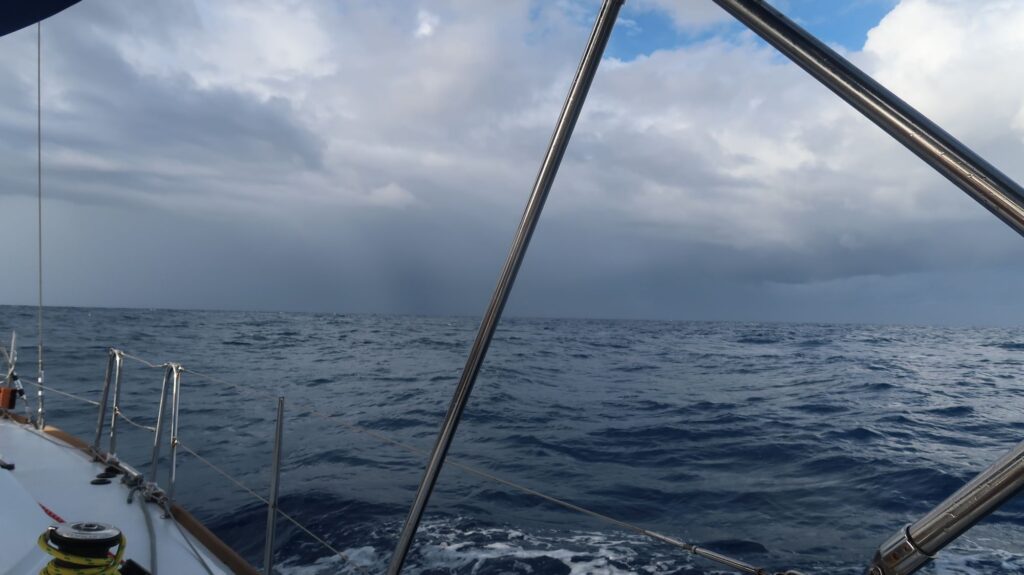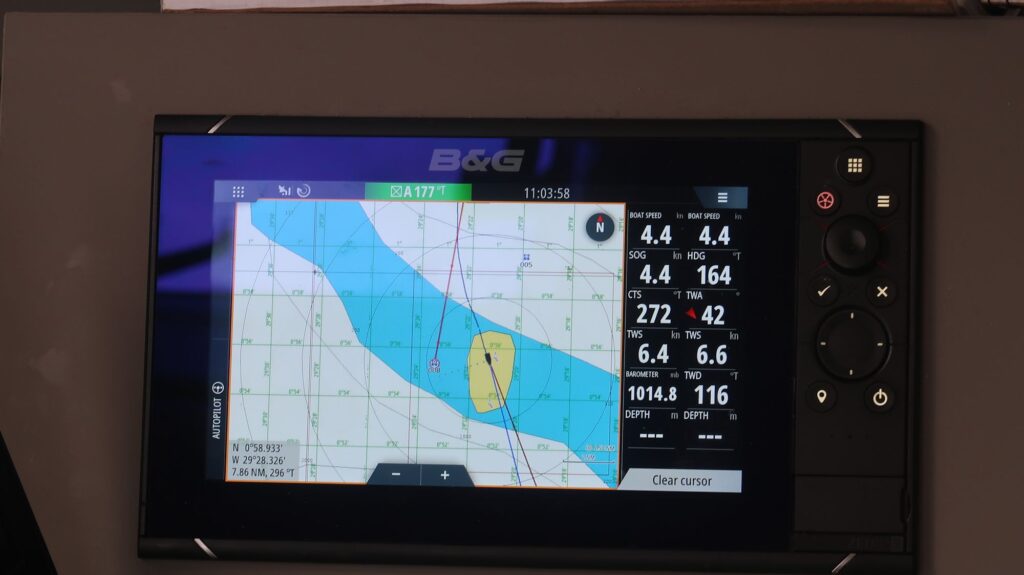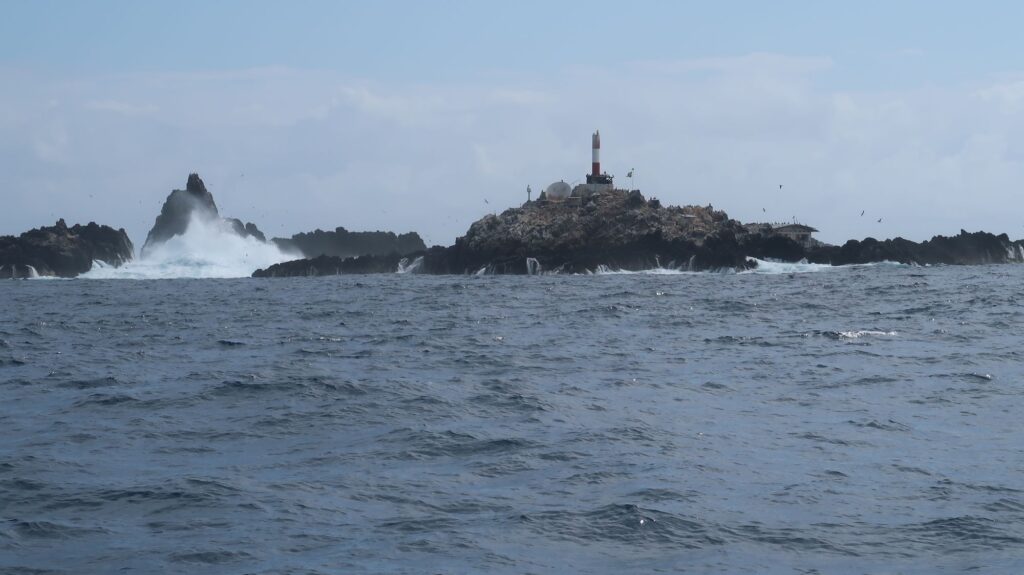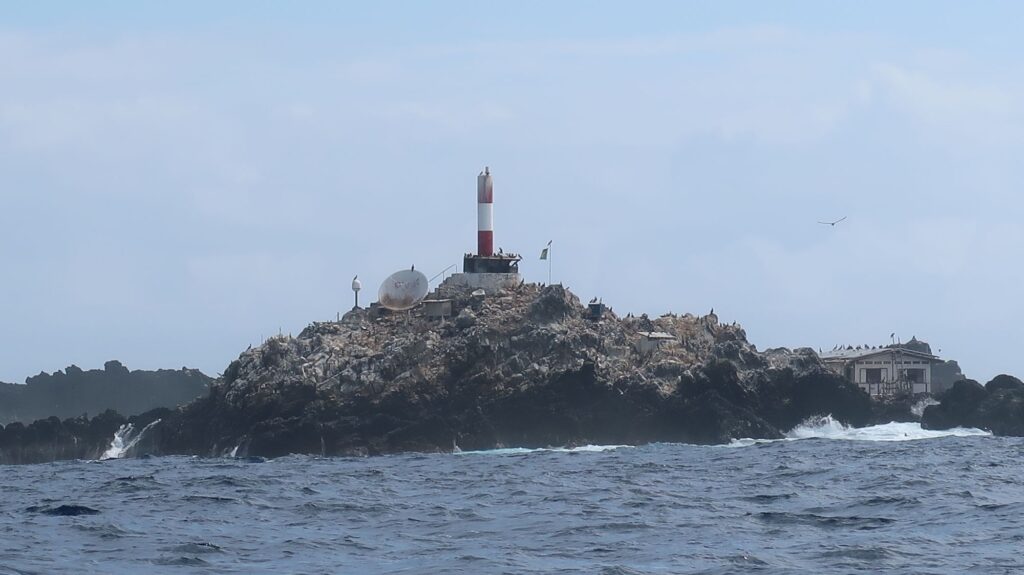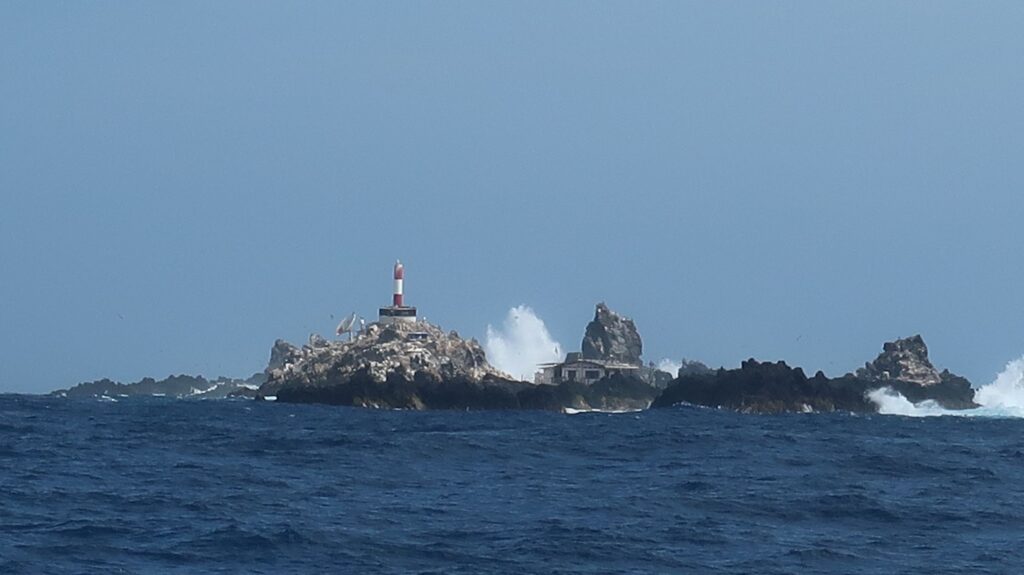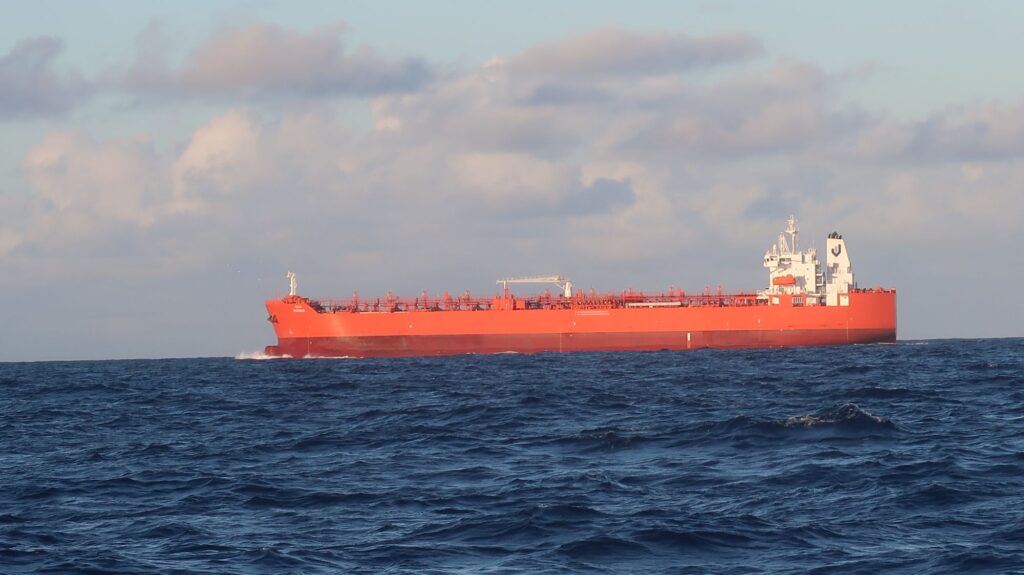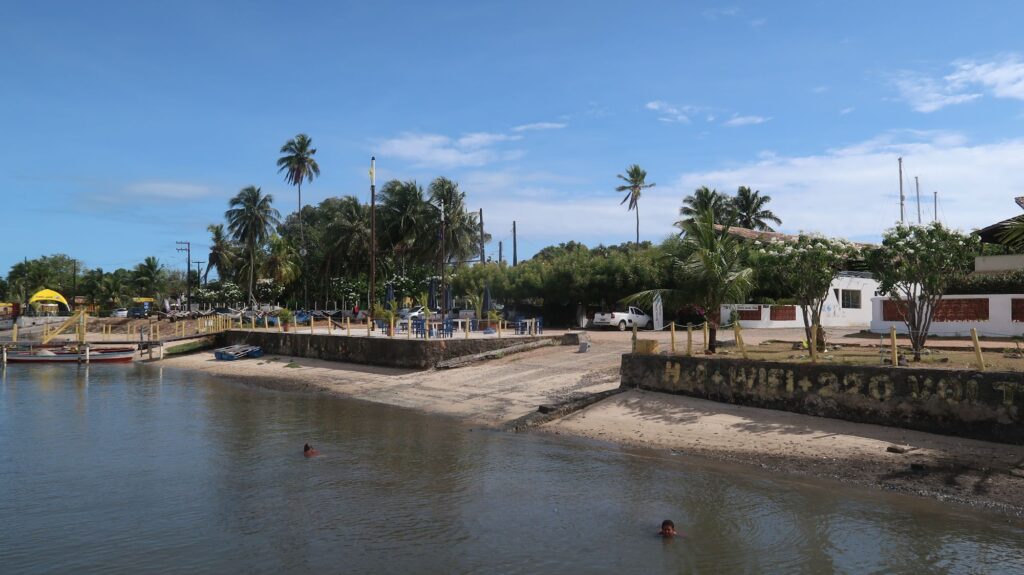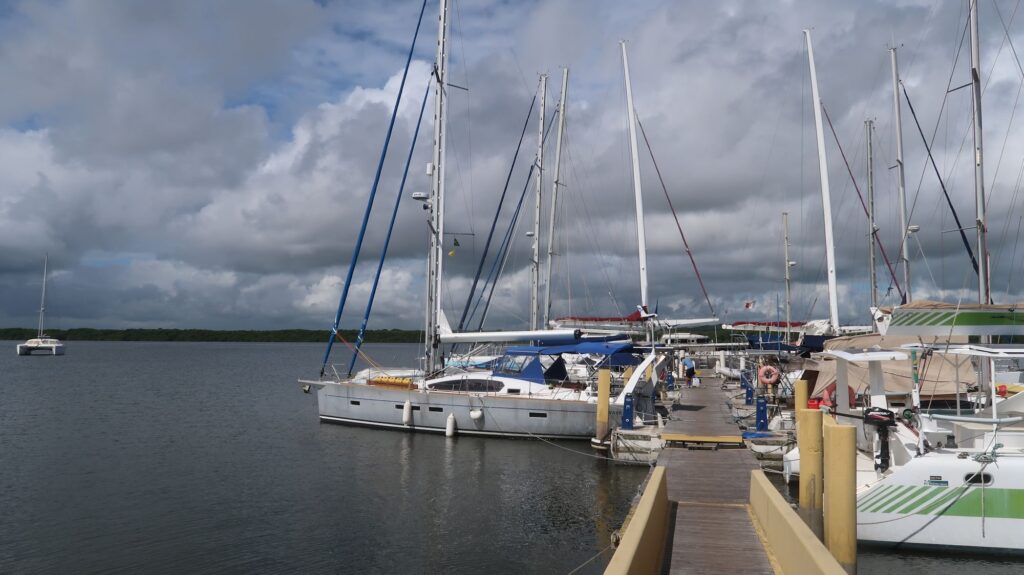I left Marina Jacare Village on Tuesday morning, November 22, and made my way north along the Paraiba River for a few miles before turning seaward in the narrow, marked channel passing the north end of the pennisula where the town of Cabedelo is actually located. Slack tide had just passed so I was slowed by a building flood current.
Jacare is a old, fairly undeveloped area situated on the river bank about 4 miles south of Cabedelo and 5 miles north of Joao Pessoa, a much larger and more stylish city with high-rise condos overlooking seemingly endless expanses of white sand beaches. With an international airport, it is an up and coming city in Brazil. Hiway BR320 runs north-south down the center of the pennisula from the industrial Port of Cabedelo through Jacare into Joao Pessoa and further south. The ocean (beach) side of the hiway is where the new developments are happening, with upscale shops and condos while the western side of the hiway facing the river is rundown and impoverished in many places, including the neighborhood immediately around the marina. Nonetheless, Jacare is where all the pleasure boats are, both locals and visitors like me.
There is a restaurant/bar at the marina open for lunch and dinner. It was the best place to eat within walking distance so I ate there often. Most of the patrons were people off the the boats in the marina. Of the 14-16 boats in the marina (which could hold maybe 30) only about 8 had people staying on board. Two left while I was there leaving a pretty small group that hung out in the restaurant/bar. There was a English father-son crew who arrived 2 days before me from Mindelo in the Cape Verde Islands. They had damaged sails and luckily found a competent sailmaker to get them fixed. There were headed for Cape Town. Interestingly, there was a parapeligic English guy, Tom, and his Canadian girlfriend Hannah who were sailing a large, custom-designed catamaran that accommodated Tom’s condition. In 2021, with other crew, he had sailed it across the Atlantic from Europe to the Caribbean. With Hannah, and a few others at times, they had sailed from the Caribbean to Cabedelo. They plan to head south to the Beagle Channel so I may see them again at some point.
The first day and half out from Cabedelo the winds were light and variable, often headwinds, so I tacked several times trying to make useful progress. By Wednesday night the winds settle in from the northeast so I could set the boat up for a port side broad reach and make good progress. With winds in the 15-18 knot range I was getting boat speeds of 6-7 knots which is good for a boat like Phywave. Before today I had sunny conditions and was able to recharge my batteries from the solar panels, primarily, and the wind generator secondarily. In direct sun the solar panel with produce 25- 30 Amps. It takes 20 knots of relative wind for the wind generator to produce 8-10 Amps.
Today, Saturday, the sky is overcast with scattered cloud buildups and intermittent light rain showers. A squall line is looming 6 miles to the east as I write this. I’m still making good progress south but I expect more cloudy, volatile weather over the next few days. I will definitely be using the generator tonight to recharge boat batteries.
